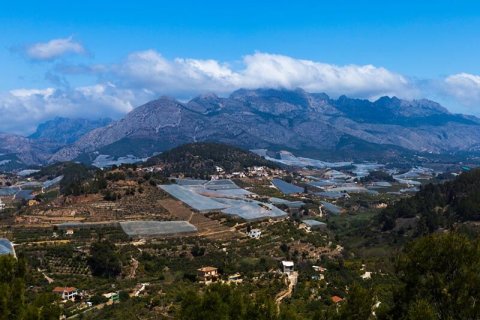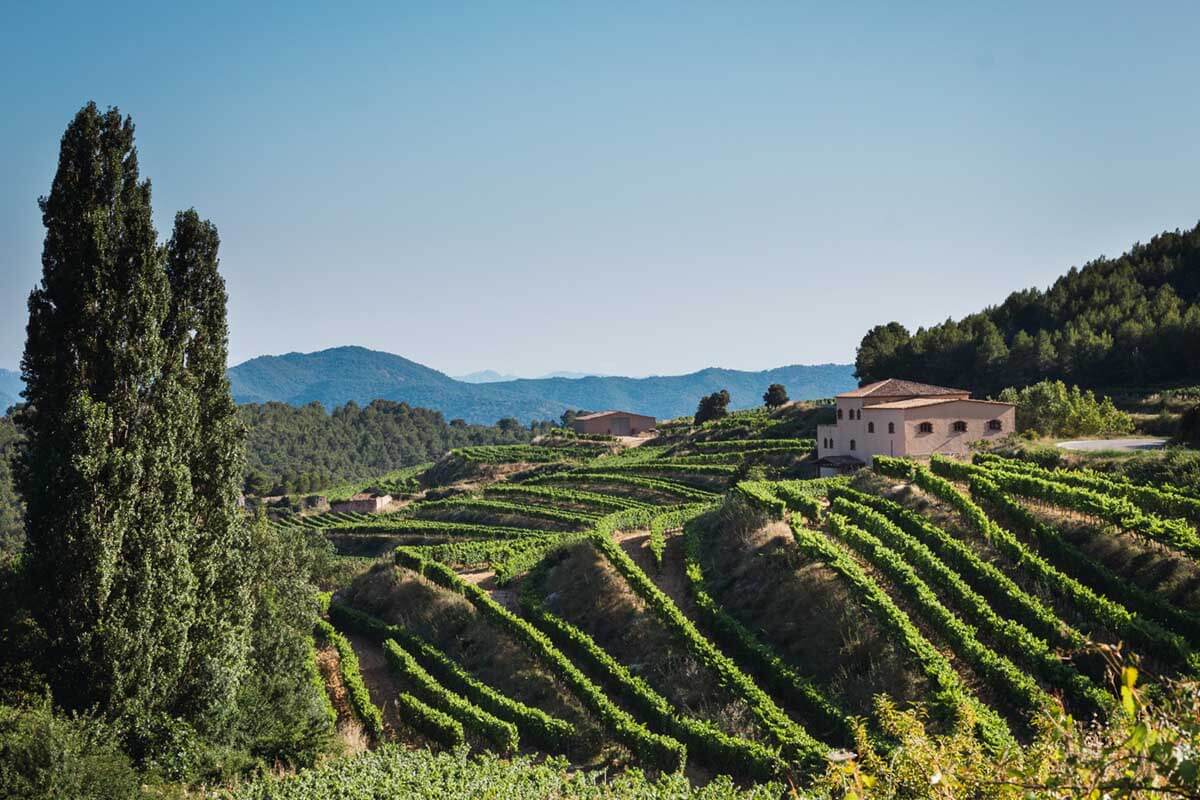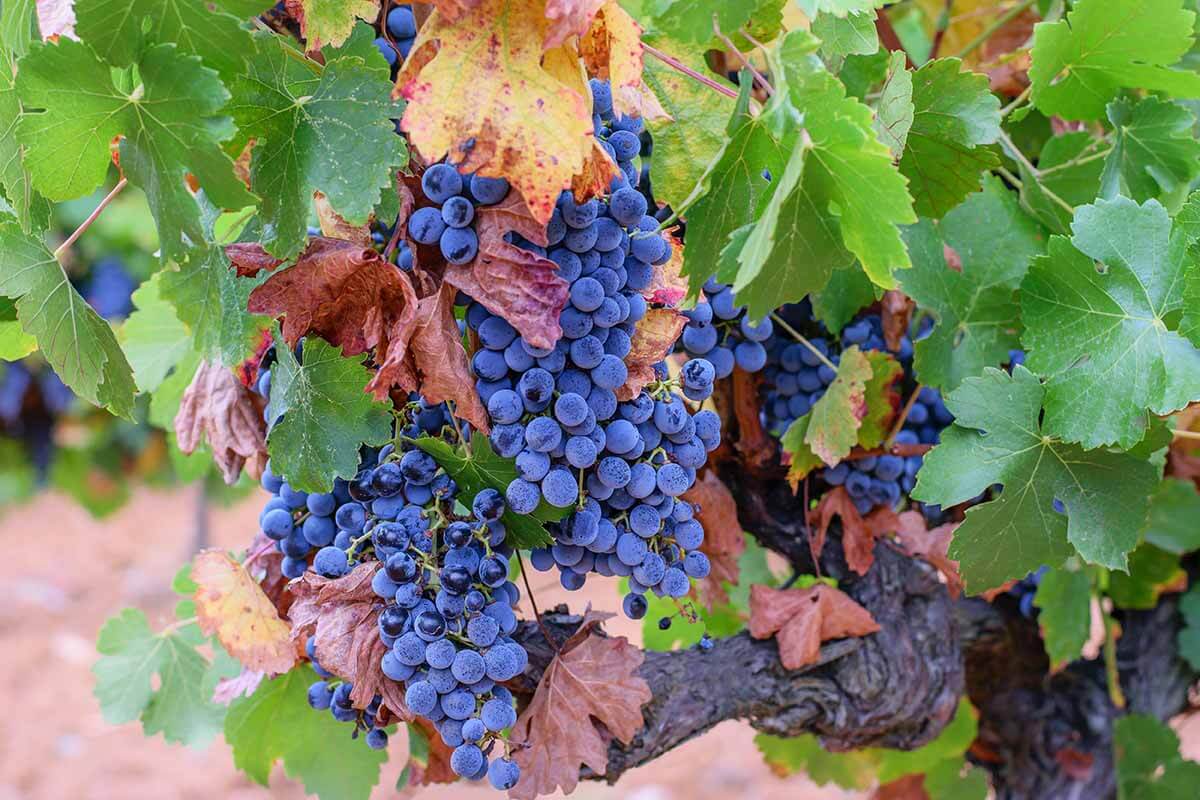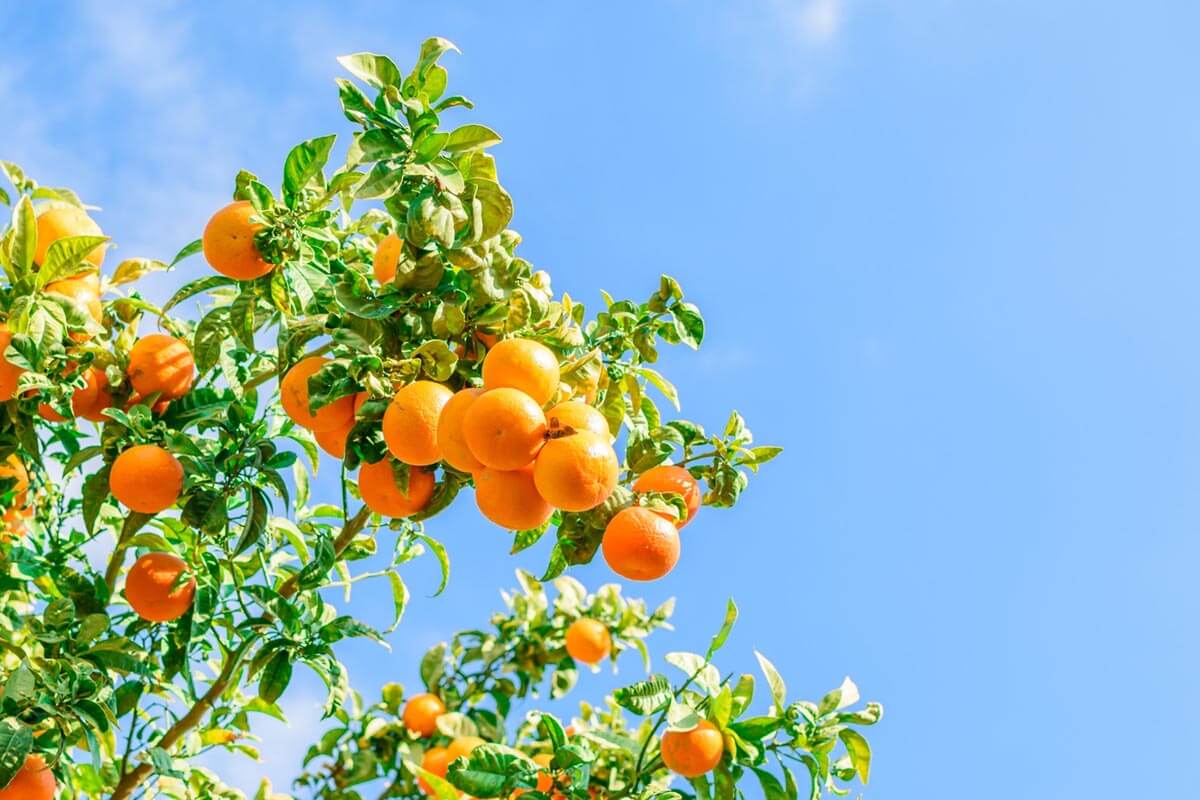
Investing in Spanish plots of land has become an attractive prospect for many entrepreneurs. However, before buying a plot, you should be aware of the advantages and disadvantages of such an investment. You should also be familiar with the process of making a risk-free transaction, and understand which areas in Spain offer the best prospects.
Content:
- Why is it profitable to invest in suburban Spanish real estate?
- The quality of the land affects the price of the estate
- Profitability of agricultural activity
- Advantages of buying land in Spain
- Possible disadvantages of investing in Spanish land
- Spain’s most attractive areas for land investment
- Is it profitable to grow citrus fruits in Spain?
- 10 tips for buying an orange farm without risk
- We will help you choose and buy real estate in Spain
Why is it profitable to invest in suburban Spanish real estate?
The Spanish climate makes it suitable for both animal husbandry and agriculture. Plots of land are in high demand because they generate income through rent, exploitation and long-term land revaluation.
There were 13,149 transactions in April 2021 alone; 172% more than the same month of 2020.
Ownership Transfer Statistics (ETDP) INE show that in the first four months of this year, the number of transactions increased by 31.3% compared to 2020.
In April, the total number of estate transactions reached 37,811, of which 14,605 fell under the right to inherit, 13,149 were purchase and sales deals, 1,402 were donations and 207 were swaps.

The quality of the land affects the price of the estate
In the housing market, rural real estate is one of the most diverse areas. If we use farms as an example, you’ll find that the type of land plays a key role in determining the price. The value will depend on whether the land is arid or irrigated, fruit producing or forested etc. Ultimately, whether the estate will be able to generate an income or not as a result of its physical characteristics.
In addition to their main economic activity, estates are also used for other purposes. These purposes can also be a factor in determining the value of the property.
The alternative use of farms as secondary residences, holiday homes, or tourist destinations could be an opportunity to reverse rural depopulation. During the pandemic, many Spaniards looked to purchase real estate outside the city because they began working remotely.
Profitability of agricultural activity
The function of the estate determines how profitable it can become for its owner. For example, the return on investment for a farmstead holiday home will differ from a plot acquired for agricultural activities, or from a farmstead that will function as a tourist destination.
In any case, the opportunities that arise from owning a farm are diverse and can provide a lucrative investment climate. In the case of agricultural activity, the market is looking positive. The table below shows the values of agricultural rent (the value generated by agricultural activity) in Spain in 2021.
| Sphere | Value %2020/2019 | Structure | Profit from agricultural rent for the year | ||
|---|---|---|---|---|---|
| Quantity | Price | Value | % | ||
| A.- Agricultural industry | 1.9 | 0.5 | 2.4 | 100.0 | 4.5% |
| Cultivation of plant crops | 1.3 | 1.8 | 3.1 | 58.4 | 3.3% |
| 1 Cereals | 31.1 | -1.7 | 28.9 | 8.9 | 3.8% |
| 2 Technical agricultural crops | 11.9 | -4.7 | 6.6 | 1.7 | 0.2% |
| 3 Forage plants | 13.2 | -6.2 | 6.2 | 3.7 | 0.4% |
| 4 Vegetables | -4.1 | 4.1 | -0.2 | 19.1 | -0.1% |
| 5 Potato | -5.1 | -24.0 | -27.9 | 1.0 | -0.7% |
| 6 Fruit | 2.0 | 10.0 | 12.2 | 18.7 | 3.9% |
| 7 Wine and wort | 21.5 | -10.0 | 9.4 | 2.3 | 0.4% |
| 8 Olive oil | -38.8 | -11.0 | -45.5 | 2.8 | -4.4% |
| 9 Other | -4.3 | -6.4 | -10.4 | 0.3 | -0.1% |
| Animal husbandry | 2.9 | -1.2 | 1.6 | 38.2 | 1.2% |
| Meat and cattle | 2.5 | -2.3 | 0.2 | 29.4 | 0.1% |
| 1 Cattle | -3.0 | -2.8 | -5.6 | 5.8 | -0.7% |
| 2 Pigs | 6.8 | -3.3 | 3.3 | 16.4 | 1.0% |
| 3 Horses | -2.4 | -2.5 | -4.8 | 0.1 | 0.0% |
| 4 Sheep and goats | -6.7 | 4.5 | -2.6 | 2.1 | -0.1% |
| 5 Poultry | -0.2 | -0.6 | -0.8 | 4.7 | -0.1% |
| 6 Other | -1.5 | -7.2 | -8.6 | 0.3 | -0.1% |
| Animal products | 4.4 | 2.4 | 6.9 | 8.8 | 1.1% |
| 1 Milk | 1.3 | 2.7 | 3.9 | 6.2 | 0.4% |
| 2 Eggs | 15.7 | 3.5 | 19.8 | 2.2 | 0.7% |
| 3 Other | 0.0 | -5.9 | -5.9 | 0.4 | 0.0% |
| Service production | 0.4 | -1.1 | -0.7 | 1.0 | 0.0% |
| OTHER PRODUCTIONS | 0.2 | -0.1 | 0.1 | 2.3 | 0.0% |
| B. INTERMEDIATE CONSUMPTION | 2.0 | -1.9 | 0.1 | 44.7 | -0.1% |
| 1 Seeds and seedlings | 2.2 | -2.2 | -0.1 | 2.0 | 0.0% |
| 2 Lubricants | -0.3 | -18.8 | -19.1 | 3.1 | 1.4% |
| 3 Fertilizers and ameliorants | 1.2 | -6.0 | -4.9 | 3.3 | 0.3% |
| 4 Plant protection products | 1.5 | 0.5 | 2.0 | 2.3 | -0.1% |
| 5 Veterinary needs | 3.0 | 0.4 | 3.5 | 1.2 | -0.1% |
| 6 Feed | 3.0 | 0.2 | 3.2 | 23.7 | -1.4% |
| 7 Maintenance of materials | -0.4 | 3.8 | 3.3 | 2.2 | -0.1% |
| 8 Building maintenance | 0.4 | -1.5 | -1.1 | 1.0 | 0.0% |
| 9 Agricultural services | 0.4 | -1.1 | -0.7 | 1.0 | 0.0% |
| 10 Financial intermediation | 2.8 | -0.5 | 2.3 | 0.6 | 0.0% |
| 11 Other goods and services | 1.0 | 0.4 | 1.4 | 4.2 | -0.1% |
| GROSS VALUE ADDED | 1.7 | 2.6 | 4.4 | 55.3 | 4.4% |
In agricultural activity, the profitability depends on: product quality, climate, market prices and other variables. In addition, if you are investing in a farm for agricultural production, you need to be sure of the quality of the land in order to make it profitable.
Geographical location is also a major factor in the economic valuation of estates.
Estate prices can also be diverse, even within the same province. Other factors affecting profitability include the size of the estate, its primary use and access to the property. The proximity of developed cities, resorts, and attractions, as well as the availability of basic services such as water and electricity also play a role.

Advantages of buying land in Spain
- Security. The value of plots increase over time, and crises do not affect prices. The exception is urban land, which is more dependent on the market. However, its volatility is low and depends on the locality or municipality.
- Low cost, but high profit. The capital needed for purchasing undeveloped land is low. Meaning there is no need to apply for a loan or save up for years to provide a down payment.
- Annual increase in land prices. The general trend is that land is overvalued every year, even if it is undeveloped. If the area or nearby estates are urbanized, the cost will increase.
- Low taxes. Taxes on plots are lower, and there are almost no additional payments. Moreover, there is no concern that the property will deteriorate.
Possible disadvantages of investing in Spanish land
- Several factors can affect the profitability of the land. For example, lack of sunlight or unclear boundaries. You should check the slope, the degree of urbanization in the area, and the composition of the subsoil. This will provide more comprehensive information, giving you a clearer picture of the whole situation.
- Other difficulties may arise during administrative procedures. Therefore, you should visit a municipal expert before purchasing a plot. This should aid you in gaining an understanding of the outstanding loans in the area. It would also be wise to familiarize yourself with the local rules, urban planning, and restrictions on land use.
- Before buying any type of land, you should check if it has water, electricity, gas, lights, and sewage. Remember, these services can vary in cost.
- Problems with title registration may affect the purchase. You should check the exact size of the plot before buying.
Spain’s most attractive areas for land investment
The country has many opportunities for investment in land. However, there are regions with higher profitability than others.
The most recommended autonomous provinces for investment in plots of land.
- Castile and Leon: many transactions take place in this territory. It also has one of the lowest average prices per square meter in the country.
- Andalusia: the average price of land is affordable. It is also home to some of the most important culture in Spain and Europe.
- Castile - La Mancha: well situated, its privileged location makes it responsible for more than half of Spain’s GDP. Proximity to Madrid is also a bonus.
- Valencian Community: the international connection makes it one of the most outstanding regions in Spain. The mild climate attracts many investors.
- Aragon: its direct connection to Southern Europe is a plus. In addition, it has one of the lowest average real estate prices in the country.
Average annual prices for land used in agriculture
| Year | Alicante | Castellon | Valencia | Valencian Community |
|---|---|---|---|---|
| 2020 | 28.930 | 10.210 | 21.180 | 19.250 |
| Agricultural land | 28.930 | 16.580 | 21.180 | 22.290 |
| Non - irrigated | 14.870 | 8.340 | 7.750 | 9.670 |
| Irrigated | 41.610 | 31.470 | 33.210 | 35.250 |
| Herbaceous plants | ||||
| Non - irrigated | 9.800 | 5.630 | 6.890 | 7.610 |
| Irrigated | 34.600 | - | 25.740 | 31.010 |
| Vegetables | ||||
| Irrigated | 39.100 | 29.040 | 32.410 | 34.930 |
| Rice | ||||
| Irrigated | - | - | 35.380 | 35.380 |
| Fruit trees in temperate climate | ||||
| Non - irrigated | 18.200 | 9.800 | 12.600 | 14.290 |
| Irrigated | 41.720 | - | 27.350 | 32.930 |
| Fruit trees with dried fruits | ||||
| Non - irrigated | 19.800 | 8.450 | 7.470 | 10.500 |
| Irrigated | 32.000 | - | - | 32.000 |
| Fruit trees in subtropical climate | ||||
| Irrigated | 48.500 | - | 32.350 | 45.640 |
| Vineyards | ||||
| Non - irrigated | - | - | 11.200 | 11.200 |
| Irrigated | 32.700 | - | - | 32.700 |
| Olives | ||||
| Non - irrigated | 16.200 | 9.360 | 9.950 | 11.450 |
| Orange tree | ||||
| Irrigated | 46.800 | 31.640 | 35.330 | 37.060 |
| Mandarin | ||||
| Irrigated | ||||
| Lemon tree | ||||
| Irrigated | 46.100 | - | - | 46.100 |
| Grasslands | ||||
| Non - irrigated | - | 1.710 | - | 1.710 |
Is it profitable to grow citrus fruits in Spain?
Citrus fruits are the most exported agricultural crop in Spain. There are gardens on the Balearic Islands, in Valencia, Andalusia, and the provinces on the Mediterranean.
Spain is the largest citrus producer in the European Union and ranks fifth in the world in annual production. This includes over 5 million tons in the past decade. Valencia is a key region in acreage (about 182,000 hectares, about 60% of the country's total) and production (more than 3 million tons per year, almost 60% of national production). Spanish citrus gardening, especially in Valencia, is recognized as an exporter of fresh and high-quality products. The country has become the world's leading exporter, exporting more than half of its products.
The Valencian Community produces mandarins and oranges (50% and 45% of citrus production respectively) and lemons (less than 1%). It produces about 35 varieties with some commercial value, including Navelina, Navelate, Valencia Navel oranges and Clemenules mandarines. New citrus varieties are produced to better adapt the sector to market conditions. These varieties also create benefits such as reduced production time, quality improvement and increased production.
Over the past 5 years, there has been an increase of more than 300% in the area of citrus fruits in the Valencian community.
An orange farm is a great option for investors who do not want to start a business from scratch. The infrastructure of these plots is well-established and developed. There is usually a manager on the farm who knows the ins and outs of the business.
Moreover, citrus fruits are simple plants, and they are easy to care for.
The citrus harvest begins in September and lasts nine months. Another advantage is that the yield of oranges start to increase over the years.
There is huge demand for high-quality, ecologically grown fruits across the world, so there will never be a shortage of buyers for your product.
10 tips for buying an orange farm without risk
-
Find out who the previous owner was and whether there are outstanding debts on the estate.
It is best to request the property register of the municipal district.
-
Find out if the estate is rented out and if there is a tenant.
Visit the estate, note its conditions and facilities. Make sure that no one else uses the plot.
-
Enter into a contract in writing: even if oral contracts and agreements are valid, the written form gives legal certainty.
Data in the contract:
- Personal data of the signatories: name, surname, address, and the identity card of both the owner/seller and the buyer.
- Data concerning the estate, such as the site number, municipality, area, cadastral number, and land registry data. However, if the plot is not registered in the seller’s name, you will have to perform various notarial or judicial procedures.
- The purchase price. You should state in writing the price you are going to pay.
- The date when the notary will sign the documents, and if necessary, a fine for a delay to the party responsible.
- Sign all the contract sheets: this will ensure no one will manipulate the contract later by adding or removing any information.
- Find out about the actual area of the estate. In this case, the safest is an expert measurement or obtaining a cadastral certificate and a SIGPAC photo.
- Check whether the estate is irrigated and find out the volume and area that can be watered.
- Establish the costs and taxes that each party pays.
- Specify the basic payment rules (PAC) of the transaction in the contract.
-
If the estate is irrigated, find out if there are any outstanding debts for irrigation. You should request a certificate from the Hydrographic Confederation and the Irrigation Community from the seller.
You can also contact the irrigation community to ask if they are aware of any payment for all irrigation fees and works. They may not provide information under the Data Protection Act, but you can find out if there are unpaid modernization works and general data on the quota per hectare for calculation.
- Check the previous payment receipts. You should ask the owner to provide the last five receipts for the IBI contribution and the payment of property tax.

We will help you choose and buy real estate in Spain
If you are planning to purchase a plot of land in Spain, you can find a suitable option at Spain-Real.Estate. This site contains many offers for the sale of plots and much more.
Look at the options for buying properties in different cities in Spain now! With Spain-Real.Estate, you will become a successful investor!









